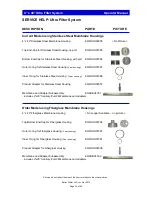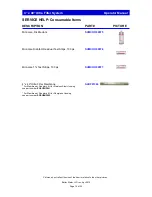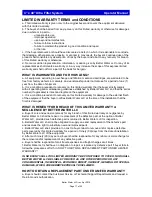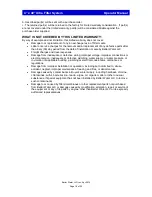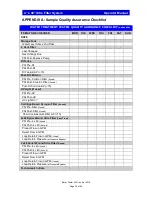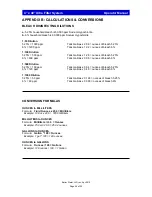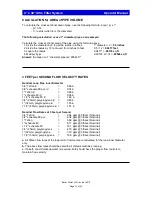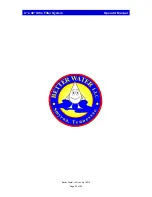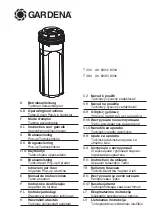
Better Water LLC; rev. Apr 2015
Page 7 of 22
4” x 40” Ultra Filter System Operator Manual
GENERAL OPERATION
Before you start using this device,
operators must read and understand this manual in its
entirety. This manual of Operator's Instructions describes in considerable detail all of the steps
and procedures required to
safely
operate this device. With proper operation, maintenance, and
care, this device should give you years of reliable service.
It is
unsafe
to operate this device without a basic understanding of water treatment and a
thorough understanding of the contents of this manual.
Incoming tap water contaminants, temperature, pH, pressure, and flow-rates have a direct impact
on the quality and quantity of the RO output. The operator must be aware of changing tap water
conditions. This can be easily accomplished with good, two-way communications with the local
municipal water supplier and with routine testing of the tap water.
To emphasize the importance of water treatment and proper use of water treatment equipment
used for hemodialysis, the following is quoted from
Health and Human Services Publication
FDA 89-4234
,
"
Numerous reports have documented that use of inadequately treated water for
hemodialysis poses a severe threat to the health and safety of the hemodialysis
patient. Despite this, water treatment and water quality are often neglected areas of
hemodialysis. A major reason for this neglect is that water treatment is a technically
complex subject which is not generally a part of the education and training of
clinical staff in hemodialysis facilities.
"
INITIAL START-UP
1.
On initial start-up or membrane replacement, divert the product water flow to drain (
not to
reservoir or distribution loop
) for a minimum of 2 hours to rinse preservative from the membranes.
DAILY START-UP
1.
Ensure the
RO machine
has been placed into the
OPERATE
mode.
2.
Ensure
Storage Tank
is at least half full (
not applicable
For direct feed systems
).
3.
The
INLET and OUTLET VALVES
(
blue handles
) are
normally open, and the
BY-PASS VALVE
(
red handle
) is
in the closed position.
* Location of these two valves is based on the left-to-right
or right-to-left orientation of the system flow.
4.
Open the
REJECT VALVE
.
5.
Verify that the reject flow is 5% to 10% of product flow.
Reject Valve
Inlet & Outlet Valves
By-Pass Valve




















